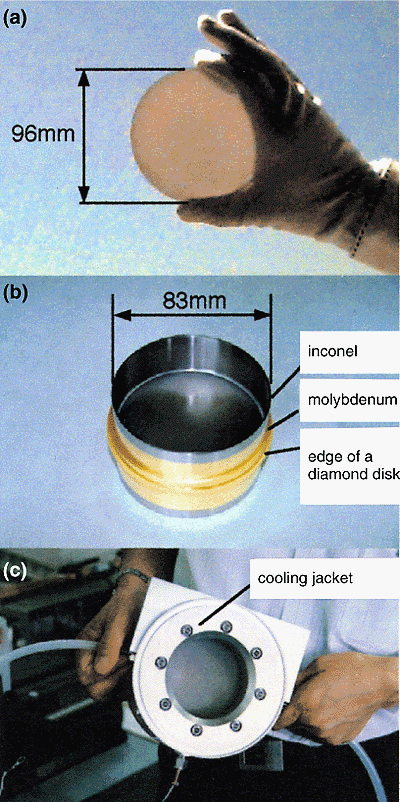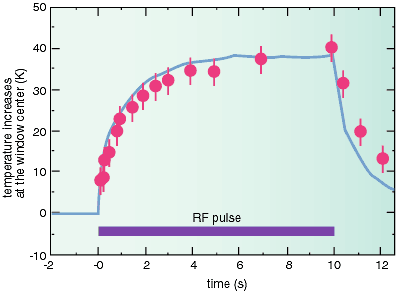A plasma in a fusion reactor should be heated to high temperature.
Electron cyclotron resonance heating uses propagating millimeter
waves in free space, so that it has the merits of the accessibility
of the waves to the plasma and the power density of propagating
waves. The generation of millimeter waves at MW levels is possible
with a gyrotron.
However, a vacuum window will be needed to separate a gyrotron
from a fusion reactor. Window materials with negligible RF loss
have been studied for a long time.
Due to recent progress in technology, it is possible to fabricate
an artificial diamond disk the diameter of which is about 100
mm and the thickness of which is more than 2 mm. It is well known
that pure diamond has a very small RF loss. However, it is difficult
to get a size appropriate for windows. The particular chemical
vapor deposition technique developed by De Beers makes it possible.
Here, we use this diamond and develop a joint between the diamond
and a metal with water cooling systems (Fig. 2-24). An example
of a temperature increase is shown in Fig. 2-25 with an RF power
pulse generated by a gyrotron. The temperature increase for 1
MW injection is estimated to be about 150 degrees based on the
data obtained, and this increase is tolerable for the diamond
disk. When we get a purer diamond, the temperature increase should
decrease. This is an example of how the impossible can be made
possible by technical progress. |

